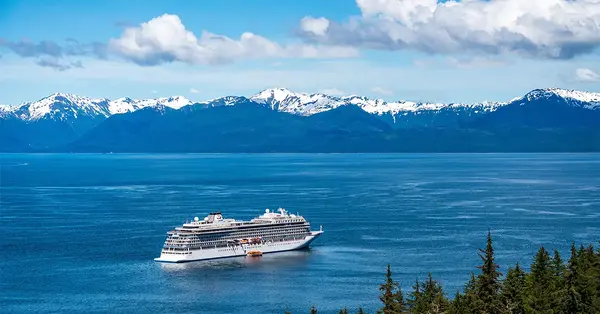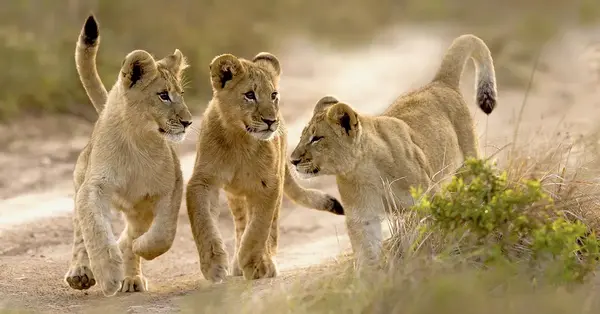You are viewing 1 of your 2 free articles
Comment: The sector must be more ambitious to create a nature-positive future
The Travel Tourism sector is critical to the global economy, expected to support around one in 10 jobs worldwide this year. In 2024, the sector is forecast to contribute a record-breaking $11.1 trillion to the global economy, and revenue from international visitors is forecast to reach $1.89 trillion.
Yet despite the fact that the sector’s economic success is intrinsically linked to the natural world – more than 80% of the value of the sector’s goods and services are dependent on nature – travel tourism itself has often posed challenges to the world’s natural resources.
Take the Caribbean as an example – a region heavily dependent on the economic benefits of travel tourism. From natural habitat loss, over-exploitation of land and water resources and a reduction in biodiversity, to pollution and coral reef damage, the sector has in many cases put stress on the environment on which it depends.
Long-haul flights and large, fully serviced hotels emit significant greenhouse gas emissions which contribute to global warming, and ultimately to rising sea levels, putting these regions at risk.
The sector, therefore, has a responsibility to minimise these impacts.
For a sector which derives its revenue largely from the value that nature brings, it is logical to adopt strategies that will ensure its long-term sustainability. After all, if nature is damaged, so too is the sector’s business model. In economic terms, for every dollar spent on protected areas and nature-based tourism, the rate of return is at least six times that of the original investment.
And it’s not just about money.
Investments in protecting and restoring nature can support and empower indigenous people and local communities, the true custodians of the land. A travel tourism sector that contributes to a nature-positive future should also have a significant positive impact on indigenous people and local communities and galvanise governments to better protect their cultural and natural heritage.
The most effective way of promoting protection of biodiversity and natural ecosystems is for the private sector to work with local people, harnessing their knowledge and supporting them to protect their land.
The Puntacana Group, for example, works with local resorts in the Dominican Republic to support social and environmental projects. One of these projects involves paying local fishermen to catch lionfish, an invasive species with a negative effect on the marine ecosystem. This project both supports local livelihoods and restores natural habitats that form part of the destination’s appeal to tourists.
For those destinations that rely on the natural environment as a primary attraction, degrading or destroying natural assets can lead to a decline in visitors, and therefore revenue. But ‘eco-tourism’ done the wrong way can also lead to destructive outcomes for people.
This appears to have been the case in the Denauru Island resort in Fiji, where a UN report identified tourism development as a “key aggravating factor” in the increasing frequency and severity of flooding in the area. Fiji has allowed tourism developers to remove the mangrove forests that once limited the damage caused by floods, that now regularly damages homes and businesses, and have displaced thousands of people.
With nearly 500 million Indigenous people around the world protecting land that is home to 80% of the world’s biodiversity, their wellbeing must sit alongside the protection and restoration of nature.
The main goal of The Biodiversity Plan, adopted by 196 governments, is to halt and reverse biodiversity loss by 2030. To clarify what this means for the travel tourism sector, Animondial, the World Travel Tourism Council (WTTC) and the Sustainable Hospitality Alliance, in collaboration with Business for Nature, have produced clear and actionable guidance to support the sector in achieving this ambitious goal.
The guidance helps businesses plot a Nature Positive Tourism strategy, uniting work around plastics and pollution, water use, illegal wildlife trade, carbon emissions and positive impacts under a single plan. Through its nature-positive initiative, businesses are being asked to commit to a Nature Positive Tourism vision.
Tourism done well has unique potential to generate significant positive environmental impacts and income for both local communities and the sector.
An example of this is the Foundation for Amazon Sustainability (FAS). For over 15 years FAS has supported environmental and economic sustainability in the Brazilian Amazon by partnering with indigenous people and local communities. FAS has shown that locally led small businesses and green energy solutions can be both sustainable and inclusive.
Garrido’s Lodge, situated in Tumbira, 60 km from Manaus on the Rio Negro, offers hotel amenities, guided river and rainforest outings, and authentic locally sourced meals to both Brazilian and international travellers. The lodge has created 18 jobs for local youth and women, and, through FAS training, lodge staff now understand how to sustainably source materials for the lodge and provide sustainable food and amenities for travellers.
Wildlife initiatives also have clear commercial benefits for the sector, in addition to positive environmental impacts. Airbnb ran a community survey to discover what experiences and actions were considered most important by customers. The highest marks were awarded to those that protect biodiversity and the environment. As the environmental consciousness of travellers increases, these initiatives can serve as unique selling points.
By its nature, the travel tourism sector is diverse and each business’ environmental impact will vary according to geography and reach.
However, addressing those impacts is essential and part of a broader global responsibility, as laid out in the UN’s Global Goals. The examples mentioned above are steps in the right direction, but the sector must be more ambitious – both in its plans and the timelines the sector has set to contribute towards a nature-positive future.
The sector needs to recognise the urgency of the challenge facing the natural world. As individuals if we are to continue to enjoy exploring the regions of the world, we must encourage the sector to come together, adopt a Nature Positive Tourism approach, and take immediate steps to help protect and restore nature.


















